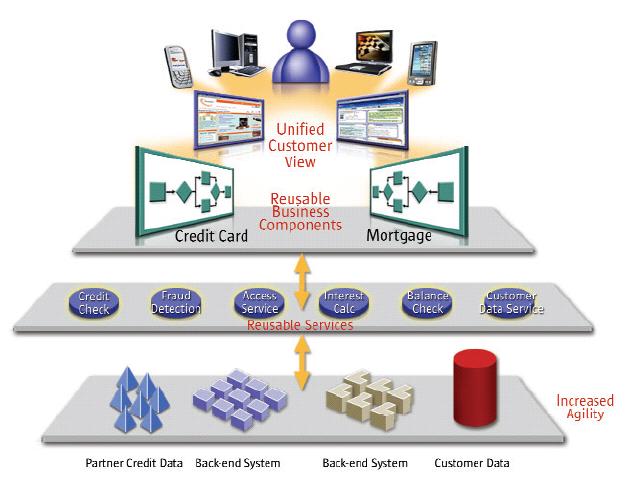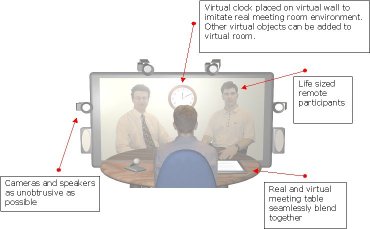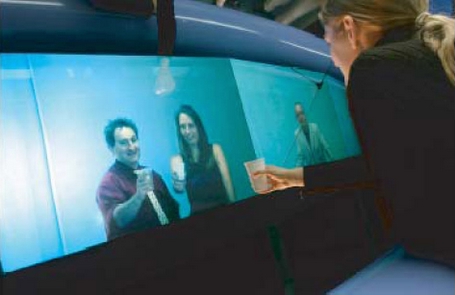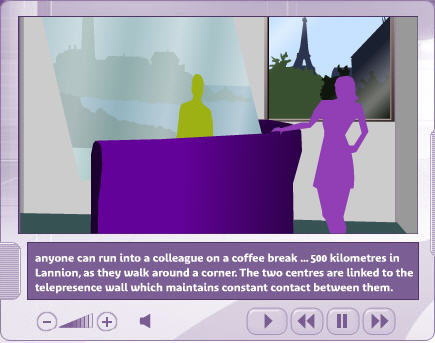eSchool News – Six Education Technology trends to watch in 2007
This original story is available at eSchool News Site: http://www.eschoolnews.com/news/showStoryts.cfm?ArticleID=6781&page=1
Service-oriented architecture, ‘cloud computing’ among the developments sure to have an impact on educational technology in the coming year
By Gregg W. Downey, Editor, eSchool News
December 22, 2006 —Educational technology at last has progressed to the point where differentiated, individualized instruction clearly is possible for students anywhere on the planet. It can be delivered at any time, in just the right form, with whatever frequency might be required. This has long been the dream of educational technologists. And today the dream has come true–at least in terms of the technology. The barriers to universal access are no longer technical; they’re political and financial.
So while governments and society grapple with the challenges of making what’s already technically feasible universally available, let’s take a look at what’s next on the ed-tech horizon. Here are six emerging ed-tech trends I think could have a significant impact on schools and colleges in 2007.
Trend No. 1: The leveling power of the World Wide Web
Call it community-generated content, social networking, or–if you’re a young technology company pitching yourself to venture capitalists–Web 2.0. Whatever you call it, it’s the trend toward end-users, consumers, teachers, and students creating content for themselves and their peers. This self-generated content can be delivered in writing, in audio files, or in video clips.
No longer need you be a major motion picture studio to create a box-office smash. You don’t need a radio station to be a popular disc jockey. You don’t need a television network to create a video that can be seen literally by millions. Why, you don’t even need a rich daddy anymore to become an overnight billionaire–or close to it.
Here’s a $1.6 billion case in point: The three young men who founded YouTube.
YouTube, of course, is the internet site that allows anyone to watch or post videos, everything from stupid pet tricks to the president’s State of the Union address. In February 2005, Steve Chen, Chad Hurley, and Jawed Karim–YouTube’s founding trio–threw a dinner party here in San Francisco. They spent most of the evening shooting digital videos and photos of themselves. Next day, they wanted to post these to the internet. Well, posting the digital photos was no problem, but the three young men discovered it was nearly impossible to post their party videos.


Being resourceful lads and computer geeks, they had the problem whipped by the spring of last year. They created a site that let average computer-using videographers post their work without having to download special software. And so it was that the first 18-second YouTube video went up on the internet on April 23, 2005. The video shows Karim standing with elephants at the zoo. “The cool thing about these guys,” intones the young narrator, referring to the elephants, “is that they have really, really, really long trunks. And that’s cool. And that’s pretty much all.”
With those immortal words was YouTube launched. It was opened to the public several days later. Steve Chen was financing the startup with his credit cards.
A couple of months ago, Chen and Hurley agreed to a secret meeting with Google acquisition attorney David Drummond at a Denny’s restaurant halfway between the Google campus in Mountain View, Calif., and the YouTube offices in a loft above a pizza joint in San Mateo, Calif. At Denny’s in two clandestine meetings, Google executives and YouTube’s three founders worked out a deal. Google would acquire the video site for a reported $1.65 billion in Google stock.
Now, Steve Chen can pay off his credit cards and can even finish earning his bachelor’s degree from the University of Illinois.
YouTube is just the latest and most spectacular example of how the democratization of the internet is about to change everything. For education, it seems to me, the populism inherent in the internet means one key thing: Call it student-centered learning, project-based education, constructivist pedagogy–all these related education philosophies and movements finally have a medium to give them genuine momentum.
YouTube also illustrates the leveling affect the internet is having on technology and business. This has big implications for schools and colleges as they seek to prepare their students for life and work in the 21st century. It’s notable, too, that Google figures into this rags-to-riches tale, because Google is a central player in another emerging trend affecting education.
Trend No. 2: Cloud computing
About 20 years ago, all anybody could talk about was the concept of client/server computing. This is the model most of us still know best–a central server or servers linked through a network to a set of client computers, all running proprietary software–like Windows, OS X, Linux, and so on.

It would appear that the era of client/server computing is about to end. Back in 1993, Google’s current CEO, Eric Schmidt, was the chief technology officer for Sun Microsystems. At the time, he made a prescient prediction. He said, “When the network becomes as fast as the microprocessor, the computer hollows out and spreads across the network.”
Sun streamlined Schmidt’s prediction into a memorable tagline: “The network is the computer.”
Not too many people back then knew exactly what Schmidt meant by that. In fact, the world at large is only just beginning to get it now. The light is dawning as the concepts of “service-oriented architecture” and “web services” begin to wend their way into the contemporary lexicon. “The premise,” Schmidt says, “is that the data services and the architecture should be on the servers.”
By data services and architecture, he means computer processes and protocols. To greatly oversimplify it, you don’t use a word processing application like Word 2003, for instance. Instead, you call up, from a remote server, a function you might need. Such a function might be the process that makes a word appear in boldface on your computer screen.

Furthermore, the server from which you call up the boldface process needn’t be on your own computer anymore–or even in your IT department.
Here’s where Schmidt gets poetic.
“We call it ‘cloud computing,'” he proclaims. “The servers should be in a cloud somewhere. And if you have the right kind of browser or the right kind of access, it doesn’t matter whether you have a PC or a Mac or a mobile telephone or a Blackberry–or new devices still to be developed–you can get access to the cloud.”
What’s all this about?
Google, along with Microsoft, Yahoo, Ask.com, and others, have positioned themselves for a new era of data management via the internet, which brings me to . . .
Trend No. 3: Service-oriented architecture
In a general sense, service-oriented architecture–or SOA–is a software solution intended to enable the enterprise to organize and marshal multiple processes. With SOA, software applications no longer are massive bundles of functions and processes. Instead, applications are composed by assembling modular services. A service, remember, is a single software function–such as cancel school bus route. It can be executed on demand by any system, without regard to its operating system, platform, programming language, or geographic location.

What’s revolutionary about SOA is not the concept itself, which has been around for a while, but the fact that it now can be implemented via the World Wide Web. Just as web pages load on any platform, web services work the same regardless of platform, provided they are built using universal standards.
Developers build composite applications by interconnecting, or “orchestrating,” services in a process flow. This flow can then, itself, be structured as a service. Developing such composite web services is often called Business Process Management. Standard SOA tools streamline the task of building service-orchestration models–similar to creating a flow chart.
SOA will have a major affect on the education enterprise, just as it will on all other types of enterprises, but some of the same concepts also have the potential to revolutionize instruction.
Trend No. 4: The gathering SCORM (Sharable Content Object Reference Model)
A close cousin of service-oriented architecture is the Sharable Content Object Reference Model, or SCORM.
SCORM is a collection of standards and specifications adapted from multiple sources to allow for the interoperability, accessibility, and reusability of digital learning materials: everything from a video clip illustrating how cells divide to a PowerPoint explication of a sonnet.

The SCORM specifications–now in edition three–are becoming increasingly important for ensuring that digital content can be integrated into any learning management system (LMS) software, regardless of its manufacturer. What’s more, SCORM is opening the door for the creation of “digital repositories,” or collections of sharable, reusable online content that educators can search through to find items they can incorporate into their own instruction.
Though SCORM might sound complicated, its desired outcome is quite simple–to facilitate the sharing and reusability of digital learning materials among educators. Educators hope the untethering of content from its method of delivery will be a big outcome of SCORM.
Toward that end, educators should consider building SCORM compliance into their specifications when evaluating and purchasing online content and delivery systems. Virtually all of the major LMS solutions used by schools today comply with the standard. Blackboard, Desire2Learn, and Pathlore, for instance, all have been certified as SCORM-compliant, and the open-source system called Moodle is on its way toward compliance.
Having a single set of standards on which to build content from the ground up–standards that allow educators to easily share and reuse content, or take the best elements from this content and tailor it to meet their own unique needs–has the potential to revolutionize instruction.
Before, with textbooks, you had to offer students information in more or less the same way it was put together by the textbook company. Now, with SCORM, you can assemble plug-and-play learning objects in a way that matches the needs of the learner.
Curriculum objects might liberate education from the rigid structure of textbooks, but nothing anytime soon is likely to take the place of an excellent teacher or an inspiring professor.
Trend No. 5: Telepresence and anytime, anywhere education

Imagine a conference room with six chairs, three on each side of a conference table. Envision a clear glass panel running down the center of the table.
Walk into this room while a high-level parlay is under way, and you’d see six executives deep in conversation. But here’s the catch: Only three of them are physically present. The three participants closest to you actually are in the room–in Chicago, say. The others are in San Jose, Calif., but their life-size, high-definition images are on the glass partition in the Chicago conference room.


Read Detail
According to an industry insider, unsuspecting visitors entering a room during a telepresence conference have at first been unaware that all the participants were not physically present:
“A person coming late to the conference and standing near the back of the room didn’t realize a telepresence conference was going on until someone from the remote location said, ‘Hey, Jim, could you move into camera range so we can see you.'”
The illusion reportedly is heightened because both locations use matching furnishings. Other elements that enhance the effect are that participants appear to make direct eye contact with one another, the streaming video is smooth and flawless, and the audio is perfectly matched to lip movement.

See the French Telecom’s Flash Presentation on Telepresence
Whether schools and universities would be willing to pay for a full-fledged telepresence capability is unclear. But, in time, the potential for education could be substantial.
Leading universities already are making course content available over the internet, and medical schools are presenting in high-definition clinical demonstrations via Internet2. Large K-12 districts increasingly rely on video conferencing for management meetings and professional development.
As Cisco chief John Chambers puts it: “Video communications is the most effective way to communicate there is.”
It seems to me telepresence is arriving just in time–just as the internet is underscoring the inter-relatedness of our world as never before.
Trend No. 6: 21st-century learning

An organization called the Partnership for 21st Century Skills has developed a program designed to help educators prepare their students for the future. A consortium of leading schools, education associations, and corporations, the Partnership is working to put America on notice: Our students are falling behind in the world. America is losing its edge. Action is required now to reverse the decline in the ability of this country to compete in the global economy. Every child in America needs 21st-century knowledge and skills to succeed as effective citizens, workers, and leaders in the 21st century. Specifically, according to the Partnership, our students need:
- Information and communication skills;
- Thinking and problem-solving skills;
- Interpersonal and self-direction skills;
- Global awareness;
- Financial, economic, and business skills; and
- Civic literacy.
You can learn more about the Partnership for 21st Century Skills at their web site, which is well worth a visit.
The confluence of these six trends–the flattening influence of the internet, cloud computing, SOA, SCORM, telepresence, and the drive for 21st-century skills–makes it entirely possible to ensure our children are well prepared for the rest of this century. It really is possible now to bring the finest teachers and professors, instructional styles customized to the needs of individual learners, and best-of-breed curricula into the service of all our students.
Gathering up the will and resources needed to do it would make for a happy New Year, indeed.
Links:
Partnership for 21st Century Skills
http://p21.org
“Gathering SCORM could transform eLearning” (eSN Online, April 2006)
http://www.eschoolnews.com/news/showStory.cfm?ArticleID=6249
“‘Telepresence’ adds realism to video conferencing” (eSN Online, October 2006)
http://www.eschoolnews.com/news/showStory.cfm?ArticleID=6661